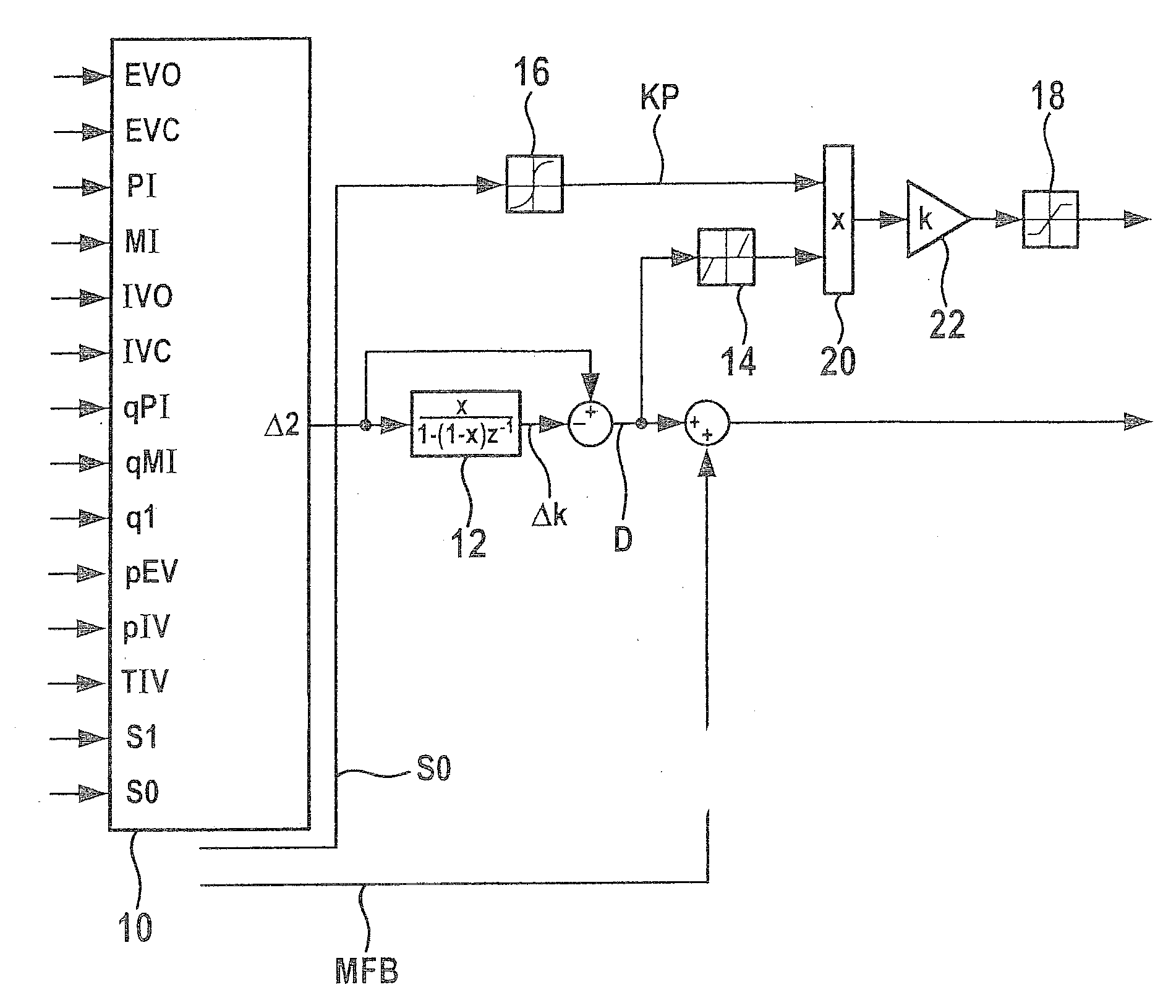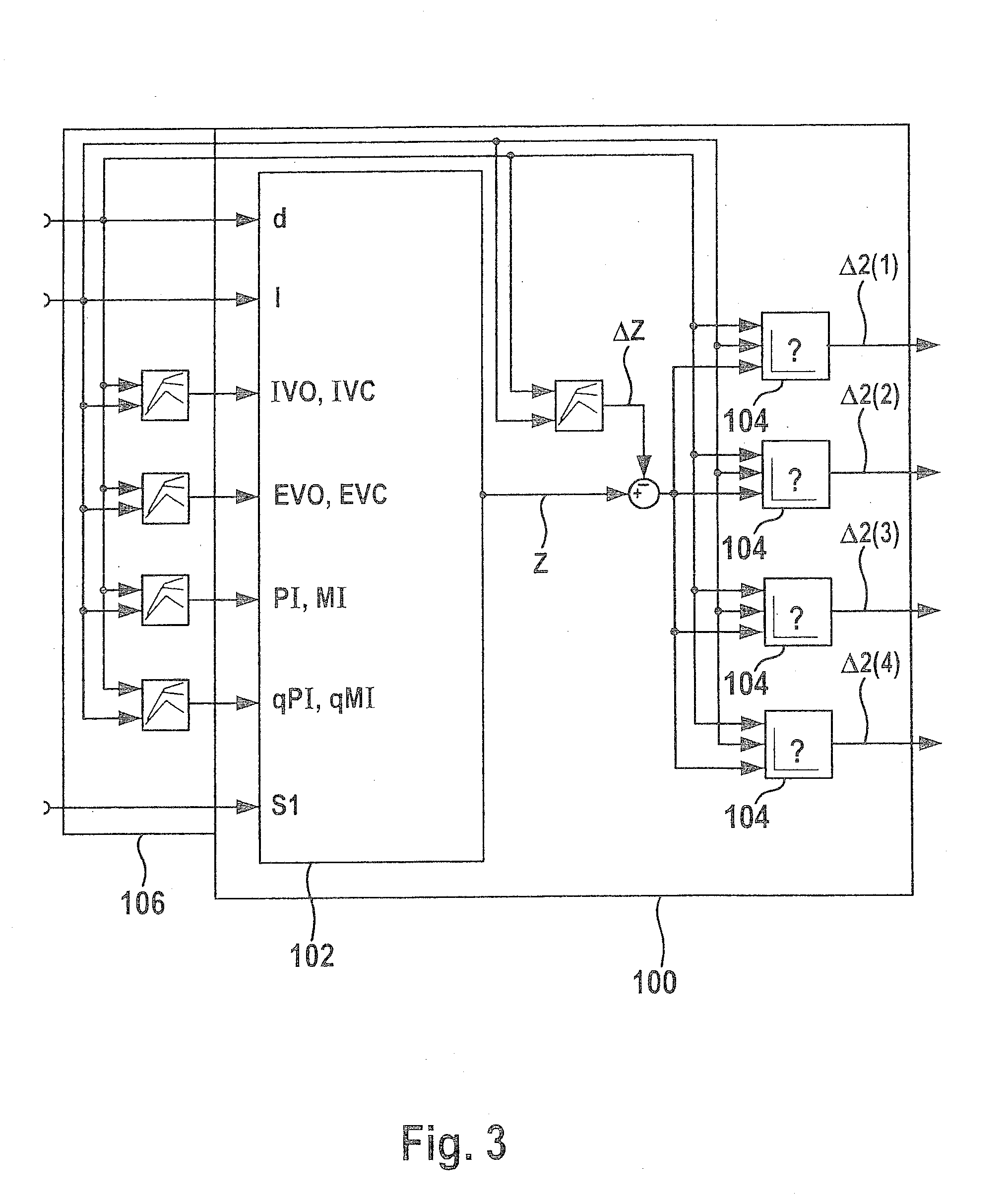Method for controlling a compression-ignition internal combustion engine and control device for controlling a compression-ignition internal combustion engine
a technology of internal combustion engine and control device, which is applied in the direction of electric control, machines/engines, instruments, etc., can solve the problems of delay or miss in the ignition of fuel, premature ignition, etc., and achieve the effects of reducing fuel consumption, good homogeneous mixture formation, and low combustion temperatur
- Summary
- Abstract
- Description
- Claims
- Application Information
AI Technical Summary
Benefits of technology
Problems solved by technology
Method used
Image
Examples
first embodiment
[0029]FIG. 1 shows a block diagram illustrating the method for controlling a compression-ignition internal combustion engine. The method is shown after at least one first cycle has occurred. The fuel ignition of the first cycle has already occurred before the beginning of the method.
[0030]In a first step of the method shown in FIG. 1, a setpoint combustion point S0 is provided to a computer unit 10. Setpoint combustion point S0 may be provided during travel while taking a current load and / or a current speed of the associated vehicle into consideration. Setpoint combustion point S0 is, for example, a setpoint ignition point in time, a setpoint feature during a combustion phase, a setpoint temperature feature during the combustion phase, and / or a setpoint 50% mass conversion point, such as a setpoint MFB50. The setpoint combustion point may be specified as a crankshaft angle.
[0031]An actual combustion point Si of the first cycle, ascertained using a sensor (not shown), is also provide...
second embodiment
[0047]FIG. 2 shows a block diagram illustrating the method for controlling a compression-ignition internal combustion engine.
[0048]The second embodiment relates to a cascading method for a data-driven model. The model preferably includes kernel-based, statistical learning methods (Gaussian processes or support vector machines) and / or neural networks. In the cascading method, an update of probable deviation Δ2 and the calculation of correction ΔEVC for the exhaust valve closing time are executed multiple times one after another, particular calculated correction ΔEVC for the exhaust valve closing time being taken into consideration to update probable deviation Δ2. For the sake of better clarity, the subtraction of the low-pass filtered probable deviation and the dead center element described above are not shown.
[0049]In a first step of the method, a data model 50, whose function is described in greater detail below, is provided. Data model 50 is stored, for example, on a computer unit...
third embodiment
[0056]FIG. 3 shows a block diagram illustrating the method for controlling a compression-ignition internal combustion engine.
[0057]Calculation model 100 explained on the basis of FIG. 3 includes a basic calculation model 102 for calculating a cylinder-independent state variable and multiple cylinder models 104, each for a cylinder of an associated internal combustion engine (not shown). Four cylinder models 104 for a compression-ignition internal combustion engine having four cylinders are shown as an example.
[0058]Calculation model 100 additionally also includes a unit for determining control parameter 106 as a function of the operating point. The unit for determining control parameter 106 as a function of the operating point is designed to ascertain a rotational speed d and a load l during travel of the associated vehicle. As an alternative thereto, rotational speed d and load l may also be output from a central vehicle control system via a vehicle bus to the unit for determining ...
PUM
 Login to View More
Login to View More Abstract
Description
Claims
Application Information
 Login to View More
Login to View More - R&D
- Intellectual Property
- Life Sciences
- Materials
- Tech Scout
- Unparalleled Data Quality
- Higher Quality Content
- 60% Fewer Hallucinations
Browse by: Latest US Patents, China's latest patents, Technical Efficacy Thesaurus, Application Domain, Technology Topic, Popular Technical Reports.
© 2025 PatSnap. All rights reserved.Legal|Privacy policy|Modern Slavery Act Transparency Statement|Sitemap|About US| Contact US: help@patsnap.com



